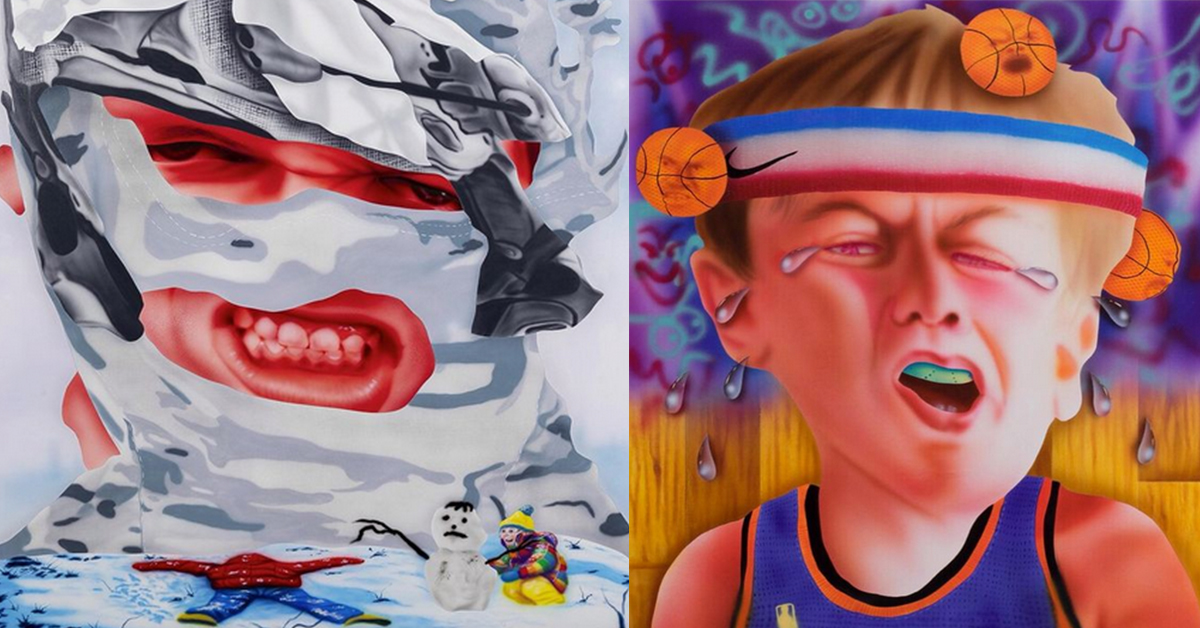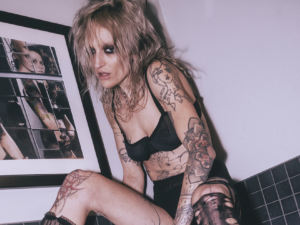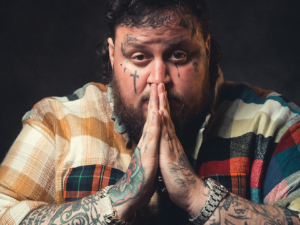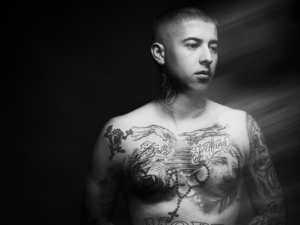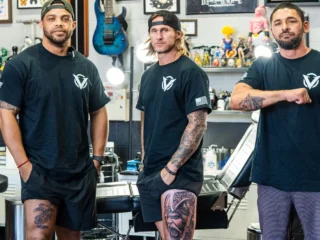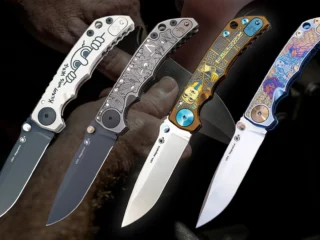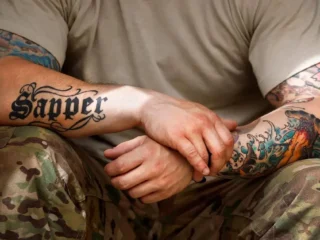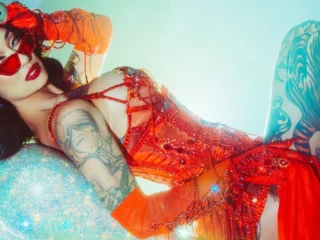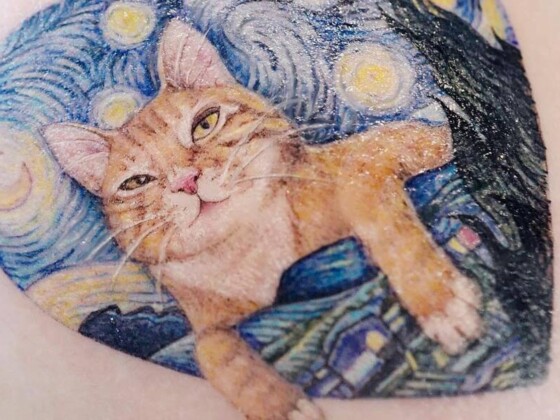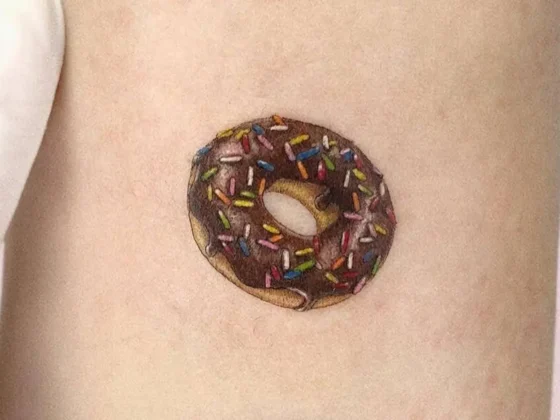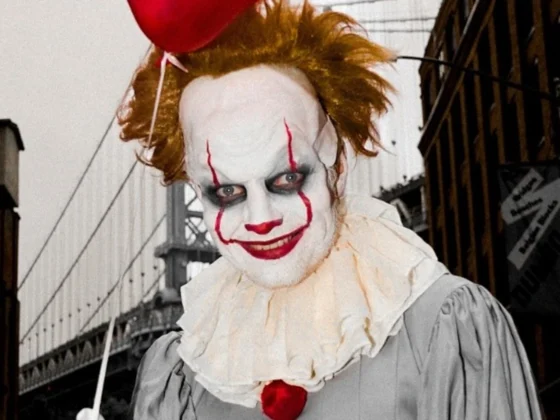Charlie Connell
November 3rd, 2021
There’s Something in the Air(brush)
Chris Regner, with his trusty airbrush at his side, is consistently pushing the boundaries of fine art.
We often marvel at how new technology can revolutionize the sciences, but we rarely consider what innovation can do for the arts. Just like the Old Masters, Chris Regner has made his mark on the world painting on canvas. What sets him apart from Goya and Bosch is the tool of his trade—an airbrush. The technique produces impossibly vibrant colors, which work marvelously within Regner’s frenzied portraits. We spoke with the artist about how he found his style, the relationship he has with his airbrush and much more.
View this post on Instagram
Do you remember the first time you fell in love with art?
My earliest interest in art stems from the comic books I read as a kid (Spider-Man and Sonic the Hedgehog). I was also exposed to Robert Crumb and Ed Roth early on. My fine art influences came later in my life with trips to The Art Institute of Chicago.
When did you know you wanted to become an artist?
I always drew when I was a kid and copied a lot of the art from the comic books I would read. I really admired one of the Sonic artists, Patrick Spaziante, and I hoped to someday work at Archie Comics and draw Sonic. That was my big dream. As I got older I gravitated towards other interests, like skateboarding, guitar and gaming. After a series of bad events in my life I went back to art school and took some life drawing classes that really kick-started my enthusiasm for art again. Ever since then I’ve been focused on making this work as a career.
View this post on Instagram
What was the first medium you worked in?
Pencil. I loved drawing little details.
What first attracted you to airbrushing?
I wanted to find a way to paint that felt more like drawing, as I don’t have much of a background in highly traditional ways of painting. The airbrush was a perfect way to translate the way I draw into a painted image.
View this post on Instagram
How do you describe your signature style of portraiture? Who were/are some of your biggest influences?
I don’t know if I can put it into a category, but it’s inspired by Surrealism, Cubist collage, German expressionism, pop art and Flemish Baroque painting. Some of my biggest inspirations are Peter Saul, Otto Dix, Francisco Goya, Juan Gris, Pablo Picasso, Hieronymus Bosch, Dana Schutz, any ancient Greek or Roman artist and Peter Paul Rubens. Other than fine artists, I borrow a lot of imagery from video games, film and toys.
When many people think about airbrushing they picture those weird kiosks at the mall where you could buy the gaudiest shirts imaginable. Do you feel like airbrushing is looked down upon by the serious art world?
Depends on who you ask, I suppose. In my experience it seems that oil painters tend to have the biggest issue with it, but that’s just anecdotal. I would say that a lot of painters tend to be rather conservative in their tastes, but there’s room for all approaches. Like you stated, the airbrush has a lot of lowbrow connotations, but I find that source material to be exciting and fresh. I’m not alone in that, as I’ve noticed that younger painters seem to be taking to the airbrush enthusiastically, which is fantastic to see. There’s no reason, in my opinion, to draw a line in the sand between lowbrow and highbrow, and any arbitrary boundaries like that just get in the way of innovation. I’ve actually started a new Instagram account with the hopes of sharing and compiling paintings executed primarily or supplementally with airbrush. It’s just another way of getting paint on a canvas so I’d like to see it normalized more.
View this post on Instagram
What can you accomplish painting with an airbrush that you would be unable to do with a brush?
There’s ways to mimic an airbrush aesthetic with traditional brushes, but not without great difficulty. I use acrylic primarily and using an airbrush allows me to paint smooth gradients, out-of-focus rendering and very, very subtle transparent layers of color. This would be very hard to do with a brush due to acrylic’s quick drying time. Due to the thin nature of the paint, you can create very luminous images that are reminiscent of traditional glazing techniques. There’s also the exciting prospect of being able to spray through essentially anything and using things like screen doors and stencils to create incredible effects.
We definitely see some similarities between using an airbrush and a tattoo machine.
Not to sound cheesy here, but how important is your relationship with your tool? I’m very sensitive to small issues with the tools I’m using and it can really interfere with working. I make sure to have the highest quality tools that I can afford in order to think less about the equipment and more about the painting. Golden Acrylic Paints and Iwata Airbrushes are my two major preferences when it comes to painting equipment. They are reliable, high quality, and allow me to do my work without many problems. I have a friend that recently started a tattoo apprenticeship and I’m beginning to learn how important it is to have high-quality machines in that field. I admire any art form that requires dedication to learning the craft.
View this post on Instagram
What can you tell us about your solo show, “That’s My Boy?”
This show came to existence out of another body of work that I was focused on the prior year. That year I made a series of paintings titled “Father Figures.” They were ruminations on my upbringing, which was devoid of a strong male role model. I thought about what a boy would look at as examples of masculinity as dictated by societal expectations and norms. I decided to make a parallel series to this titled “That’s My Boy,” which took an alternative viewpoint wherein I imagined what my absent father would have desired out of a son. It explored a lot of my perceived shortcomings as a man and my pathetic attempts at being strong and self-reliant. A lot of the paintings in this show revolved around that idea. I also started to integrate animalistic imagery, as I was thinking a lot about the idea of nature versus nurture and if a person can overcome their genetic predispositions.
Your art has evolved over the course of your career, is that a conscious approach on your part to keep things vital, or is it more organic?
For many years I liked to work on one idea at a time and create a body of work from that. This was a conscious approach, perhaps detrimentally so, but it taught me a lot with each subsequent series. Lately I find myself slowly watching my paintings evolve on their own and letting go of some of the control I exerted over them in the early years of my career. I think that the more work you make the more you learn to trust the process and trust that things will work out.
View this post on Instagram
Editor's Picks
Royal & The Serpent
The hilarious and talented musician talks mental health, music, tattoos and more
Son of a Sinner
From rough-and-tumble roots to mainstream stardom, this genre-crossing musician is on a roll
A Cut Above
Celebrated barber Vic Blends can charge whatever he wants for a haircut, but all he really wants in exchange is a conversation and human connection

